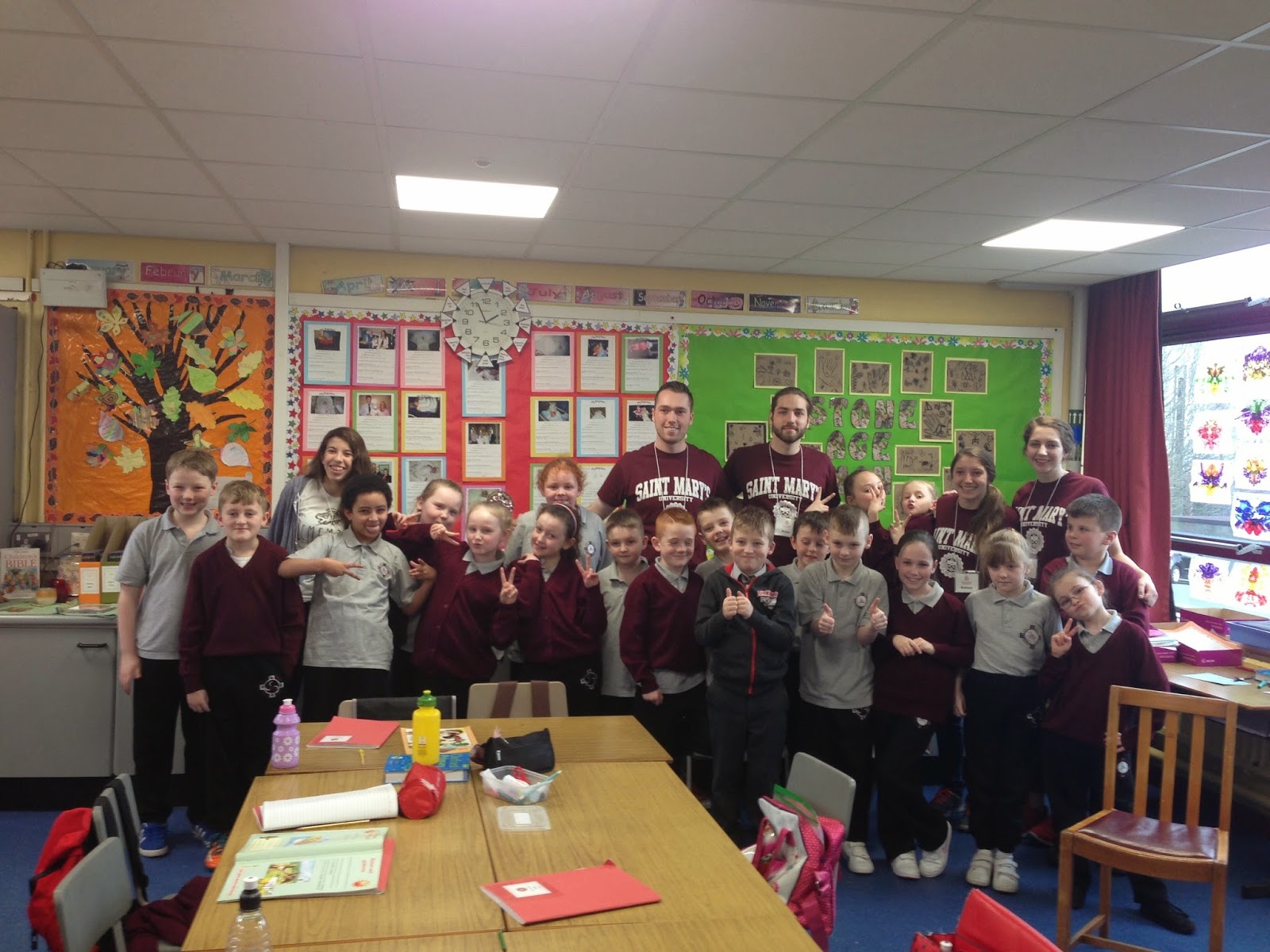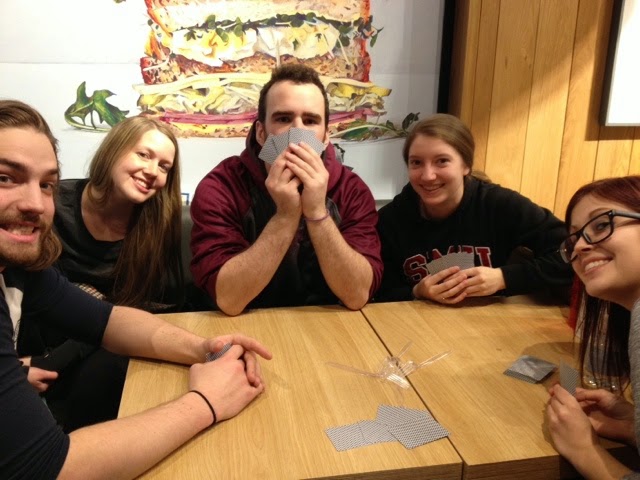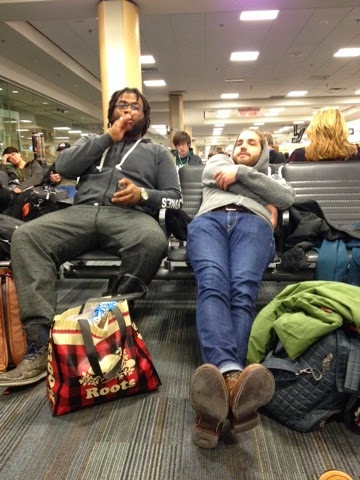We have now finished our last day running
workshops in schools. What an
amazing experience it has been. While none of us expected anything short of a moving and rewarding adventure, it’s safe to say we’ve been touched beyond expectations. 


So much hard work and preparation goes in to
the workshops we do.
We have practiced amongst ourselves for hours, studied our scripts, and
had numerous practice runs in schools back in Nova Scotia. While we were all confident in our abilities,
the success you feel when you can see the impact made on these children
reaffirms everything we’ve worked for.
We spent our first day in a slightly
different scenario than we had anticipated.
With the guidance from Peaceful Schools International Coordinators, Rick
and John, our group facilitated workshops to a team of recreational soccer
players. The youth were all males aged
fifteen to seventeen. Most of our
practice and training had revolved around youth considerably younger than this
age group, so at first I think we were all somewhat intimidated.



However, Rick and John are such strong leaders they took the reins, leading a discussion that cut deep into issues of violence, trust, peace, home and personal conflicts. By mid afternoon our small groups and 1:1 ratio with the youth broke down a lot of the tensions and anxieties. By the end of the day I think our group and theirs both benefited pretty enormously from the situation. The arrangement of the day allowed a lot of time for the youth to interact more casually with us as facilitators. This allowed them the opportunity to ask us about our own experiences as people only a few years older than them.



However, Rick and John are such strong leaders they took the reins, leading a discussion that cut deep into issues of violence, trust, peace, home and personal conflicts. By mid afternoon our small groups and 1:1 ratio with the youth broke down a lot of the tensions and anxieties. By the end of the day I think our group and theirs both benefited pretty enormously from the situation. The arrangement of the day allowed a lot of time for the youth to interact more casually with us as facilitators. This allowed them the opportunity to ask us about our own experiences as people only a few years older than them.

Wednesday was our first day spent in
primary schools. Our team was divided
into two groups, one visiting a local Protestant school and the other a local
Catholic school. My group had the
opportunity to visit a school called Wheatfield. Wheatfield is significant in that it is
located in the Ardoyne community in Northern Belfast. Just down the road from Weathfield is Holy
Cross Primary.
Holy Cross was the site
of what became known as the Holy Cross dispute, a time of protest where
Protestant radicles blocked the front entrance to the school, interrupting
Catholic school girls and their families from being able to walk to
school. In the early 2000's the dispute involved the IRA and
garnered mainstream media attention from around the world. It was during this time that Hetty van Gurp,
the founder of Peaceful Schools, decided to get involved with the peace project in Belfast.

Thursday, our second day in schools, our
whole group traveled to Holy Trinity Primary School. There, the school’s eccentric and
friendly principal welcomed us in. He
happily adorned the SMU sweater given to him as a gift as he proudly toured us
around the facilities. Between workshops
each of us had the opportunity to join the students in their playground for
recess. The amount of energy created
when 15 playful foreigners from Canada join a group of 150 eager primary school
children is not to be overlooked.
Between conga lines, games of tag and discussions about comic books, the
atmosphere, although positive and educational, might not easily have been
described as peaceful.
At the end of our day visiting Holy Trinity
we were invited to join the school in the assembly room to watch a
performance they had prepared for us.
There, we were serenaded by the African Drum Club (who could
seriously play) and a quick concert.
Rather than a choir group, the entire school sang a couple songs about
peace and love while their principal, still wearing his SMU hoodie, accompanied
them on piano. The performance blew us
all away, inspiring our own impromptu concert in response.
Friday, as our last day in school we
travelled to St. Clares Primary School.
St. Clares sits on an interface, a dividing line between Protestant and a Catholic
neighborhoods. This school however, is a
Catholic one. By this point we all felt
fairly confident and polished with our workshops. As the day wound down and the realization
that this would soon be over set in, it was a little hard. So many months of preparation went into this;
the time goes by so quick it’s hard to even process everything that
happens. By the end of our last
workshops, between our time in schools in Belfast and back in Halifax we estimate
that we have reached several hundred youth.
The thought that even a percentage of those kids would truly internalize
the messages we teach is pretty incredible.
You can learn a lot about something from
reading, watching documentaries, asking questions and talking to people, but
nothing compares to how it feels to actually go somewhere and see it first
hand. I think we were all a little taken
aback by the amount of discrimination that still exists in Belfast. The ability to feel like you make even the
tiniest impact in removing that discrimination makes every bit worth it. The truth is that this sort of interaction
really does work. The kids really do
care. They listen. They are young enough that what we teach them
now will ultimately mold who they become as people when they’re older. As foreigners and fun loving people, we are
able to entertain them and reach them on a level that otherwise might be
unobtainable. We come to their classrooms
with funny accents and talk about the importance of huge concepts like empathy
and what they can do to become a good global citizen. On top of this, the satisfaction we feel from
this kind of work will undoubtedly start an addiction in most of our group to
continue perusing initiative positive change.
The time in schools has been so overtly positive it’s really hard to
even explain. Throughout those few days
I had the chance to connect with students from across the world and with new
friends from this program I had just made.
We were able to share true human emotion and to promote something
positive. Feeling that is indescribable.










































